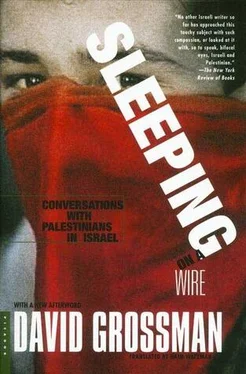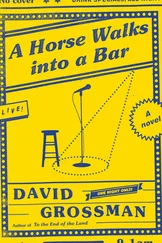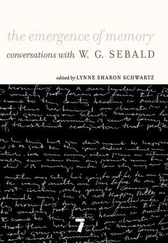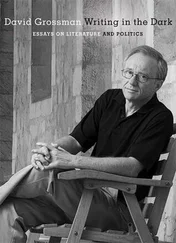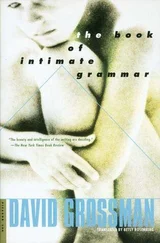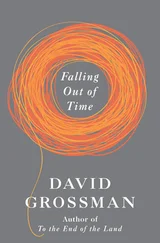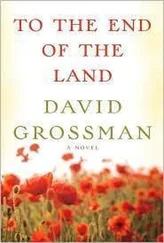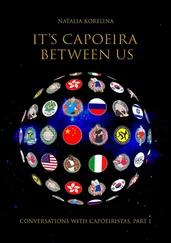It’s the Sukkot holiday and the village paths are full of visitors. A young couple asks Abu Elheija where the gallery is, and he explains politely. Afterward he takes me to the village’s small amphitheater. On Friday nights he hears the best Israeli pop music coming from here live. I recalled concerts I had heard there, and something twisted in me at the thought of the notes crossing the wadi in joy, up to the ears of the present absentees. Returning to me like an echo, in a slightly different context, came the words of Azmi Bishara: “Once, at night, in the summer, I passed by the watermelon stands in east Jerusalem, by Herod’s Gate. I could not believe what was happening there — the eastern city was quiet. Night. Darkness. Only the Israelis danced. Shouted. Went crazy. I could not grasp the contrast. There were no people in the streets, but there were Israelis dancing, and a strong light, and music, and the city was gray, gray.”
“Do you know Italo Calvino’s book Invisible Cities? ” Giora Ben-Dov asked as we stood looking out over the beautiful view, the Atlit fortress and the sea reflecting through the small sabra cactuses on his lawn. “It tells of a city where all the people are connected to their relatives by string, and each kind of relation has a string of a different color, for commercial relations, blood relations, etc. Now, the problem there is that too many strings collect in the street and it’s impossible to walk, so they go out and build a new city. The same thing happens there. If they go on being stubborn about the ties they have to the cemetery, and we continue being stubborn about our ties to the Patriarchs’ grave in Hebron — in the end we’ll all suffocate in our own ties, and I say the time has come for us to go to the new city.”
The problem, of course, is not the cemetery but the Israeli state’s attitude to the lives of the unrecognized. Not only does it not allow them to leave for a “new city”; it also sometimes tries to eject them from their old places. At this writing there is a struggle over the displacement of the unrecognized Bedouin village Ramia, in order to make room for the construction of a neighborhood for new immigrants in Karmiel, a Jewish town in the Galilee. “What will happen, what will happen,” Abu Elheija murmurs, and tells of the great overcrowding in his village, where it is forbidden to add even a room, and there are large families, and married children have no space to move and no space to breathe. It reached the point that the village council assembled and planned to divide family houses with walls. Once a month, on Thursday, a helicopter passes overhead and photographs the village, to check whether any walls or rooms have been added. “And if someone from Nir Etsion hears a tractor running in the village, he immediately telephones whomever he has to and they come in an instant.” The government established a special patrol, the Gray Patrol, he said, with a helicopter, twenty jeeps, and eighteen inspectors with guns and dogs, and once every two weeks they come to the village and check. (Now I understood why they were suspicious of me when I arrived.) “The state does not recognize us,” Abu Elheija says, “but I still hope we’ll find our place here. I continue to try to live here as an Arab. To try to tie myself to this administration. Here the government is in the meantime building up hatred that is…irreversible. In the end everything depends on the government. If it wants us to reach the state the territories reached, it will decide. Not me.”
“And what will happen if they try to evacuate you from there, as they are trying to do with the people of Ramia?”
Abu Elheija turns his eyes away from me. “If they try to evict us again, I won’t stay here. I will leave the place to you. Take everything. I’m not willing to live that way. I won’t force myself on you. Stay by yourselves.”
This, in brief, is the story of the struggle of the present absentees against their fate. They have long been asking the State of Israel to let them, finally, start to be . In the 1948 war, Israel’s War of Independence, there was cruelty on both sides. The acts committed by the Arabs and the soldiers of Jordan’s Arab Legion against the besieged Jews at Gush Etsion were no less horrible than the acts committed by Jewish soldiers against the innocent civilian Arab population. There was a war. People I know spent nights in ambushes alongside paths leading to Arab villages and shot people, women and children, who wanted to return to the houses they had been expelled from. That time has gone. Two and a half years ago I heard a very defense ministerish government official say, at an officers’ school graduation ceremony, “We are still fighting for our independence.” This means that, according to the way this minister feels, Israeli Jews have still not begun really to be . In fact, since I set out on this trip, a feeling gnaws away at me that maybe we have not yet been “liberated.” It may well be that as long as we do not end our War of Independence we will never truly be a free nation in our land. “How many more years will you sing the line in your anthem, ‘Hatikva,’ that goes ‘Our hope is not yet lost’?” Lutfi Mashour scoffed. “Stop hoping already and start understanding!” And Abd Ellatif Yunes from the village of Ara told me at the beginning of the summer: “My and your fate is to live together. It would be an error if you ignored me, because whether you want it or not, I’m staying. But I think that Israel would be a better place if a man like me could also feel that he wants to live here, and I don’t think Israel can really be a nice place as long as 20 percent of its population lags behind and is not accorded basic human respect.”
In the empty parking lot, which is also the garbage pickup point for the Ein Hod artists’ colony, which is also the old cemetery of Ein Hud, over a broken plastic sign rolling in the dirt, NO LITTERING ON THIS SITE, Mohammed Abu Elheija says, speaking for the people of his village, “There is no one in our village who still dreams of getting back the old place. What more can we do so that you believe us? A new reality has been created. The new village. If you suggest that we buy or even lease the land on which we live today — even if it is already our property and is registered in our name — we’ll accept the proposal. Just make it.”
Sometimes a familiar reality — like a familiar text — is handed to us in “translation,” revealing to our eyes slender threads we did not see in the “original.” For several days I looked at Israel through the eyes of the present absentees, and I knew how much this merciful country of mine, which sends medicine and blankets to every Kurdish refugee and every earthquake survivor in Armenia, how well it also knows how to put on a stone face. From within the denied Ein Hud I could see how that stone mask gets thicker and begins over the years to grow inward, how it molds mind and soul and petrifies the language, until it produces tongue clots like that miserable pair of words.
“At the age of forty everyone has the face he deserves,” my grandmother used to say, and we have been here forty-four years. On Bertolt Brecht’s wall hung a Japanese woodcut, a mask of evil imagination covered with gold lacquer:
With compassion I gaze
Into the swollen arteries on his forehead
A hint
How tiring it is to be evil .
“When I met Rasan,” Irit wrote me, “I, like many Israelis, had preconceptions about Arabs. Before I went to college I didn’t know any Arabs at all. In Tel Aviv, where I lived, I didn’t have anything to do with them. At least not personally, except as laborers who worked in the neighborhood. Actually, I thought of them as objects. Or more accurately, they didn’t exist at all. In my subconscious they were something frightening, threatening, that it wasn’t a good idea to have any kind of contact with.”
Читать дальше
